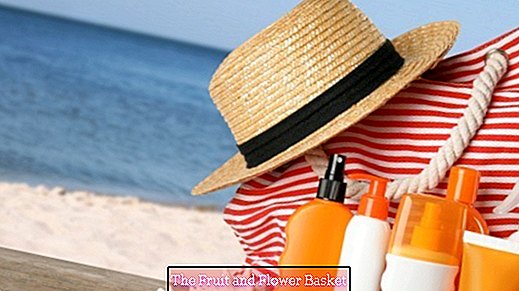Which sunscreen is the right one?
Summer, sun, holiday season. Whether beach, bathing lake or terrace, becoming brown every year is the omnipresent goal in the summer. That the solar radiation is not harmless and creaming before sunbathing should therefore have the highest priority, is now well known. But how exactly does sunscreen actually work and what does the sun protection factor say? We clarify the differences.
UV radiation and sun protection factor
That the bold numbers between 6 and 50 on sun milk bottles for the SPF factor (LSF for short) is no secret. The higher the number, the better the protection. But hand on heart: Do you know what the number really says? The LSF refers to the UV-B radiation of sunlight, Starting from the Self-protection of the skin it can be used to calculate the total duration of sunbathing. This self-protection time varies depending on the skin type and is mostly among Central European people 10-20 minutes, If you can sunbathe for 15 minutes without sunscreen, this time increases by a factor of 20 to 20x15min = 300min when using SPF 20. If you are sufficiently creamed, you can theoretically spend 5 hours in the sun.
Of course these are Values only theoretically and go away large amounts of sunscreen out ? which must also be applied evenly and refreshed regularly. Also the UV index of the sun is not included here, it varies greatly depending on the country and season. In reality, the calculated time should never be fully exhausted, go better already after 2/3 of the duration in the shade, By the way: Reapply is important to get the sunscreen, but does not increase the maximum stay in the sun.
The SPF only gives protection against the UV-B radiation of the sun, as it causes sunburn. Also UV-A radiation is dangerous and leads for example premature aging and pigmentation, A circle labeled UVA features sun creams that also protect against this radiation. The protection is then at least one third of the specified UV-B protection.
Mineral and chemical sunscreen
Basically, there is the sunscreen two different mechanisms of action, Most conventional sun creams work with you chemical UV filters, These pull into the skin and then act by converting the solar radiation into heat energy through the chemical compounds of the cream. However, the substances needed for this are suspected hormonally effective or hazardous to health to be and can Cause allergies, Add to that negative environmental influences: Some of these substances affect the ecosystem and damage, for example, corals in the sea. If you are allergic to normal sunscreen or have skin problems, a mineral sunscreen may be better for you.
Mineral UV filters form one Protective layer on the skinSo they should not move in completely. The cream creates a physical barrier that Solar radiation is reflected and can not penetrate the skin. That works with White pigments such as zinc oxide and titanium dioxide. On the skin can with mineral sunscreen white movie arise. This is for many an absolute no-go, does not look very nice and can also feel uncomfortable. But mineral sun creams do without many of the questionable ingredients that hide in the chemical variant. So everyone has to decide for themselves what they prefer. Good to know: The protection of mineral sun creams already exists immediately after application, In chemical sun creams, the cream must first act, so you should be here so 20-30 minutes before you go into the sun cream.
To minimize the white film, be in some mineral suncreams nanoparticles used. However, as it is not yet fully understood what effect the particles can have on the human organism, caution is advised. Note, however, that nanoparticles can be found in chemical sunscreens as well. The scent is often a key consideration when buying cosmetics, but should be better on sun creams fragrances be waived. They can disintegrate under UV radiation and cause allergic reactions.
Cream, spray, milk? What works best against UV radiation?
Sunscreen products are available in various designs. What are the differences in composition and effect? First, the good news: Basically, so with proper application, are all variants equally effective, You can usually rely on the advertised SPF. Before you buy, be sure to find out which product best suits you and your needs.
Sunscreen is characterized by a high fat content and is therefore especially suitable for dry skin. It offers a rich care, with which you can prevent dehydration by salt water and sunbathing. Sunmilk has a slightly lower fat contentThis makes it more fluid and easier to distribute. So, if your skin is so heavy, you'd better reach for that option.
This is especially popular with children sun spray should be treated with care. There is a risk that when spraying something gets into the mouth or eyes, In addition, comes in when applying not insignificant part of the body over ? which increases the likelihood that a sufficient amount will not be used. It should therefore always be two layers be sprayed on.





